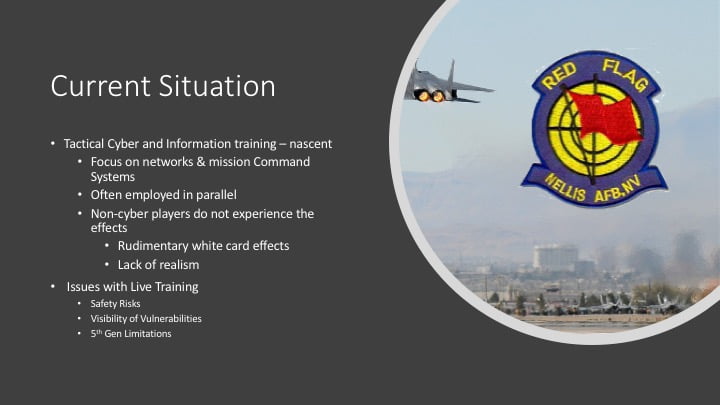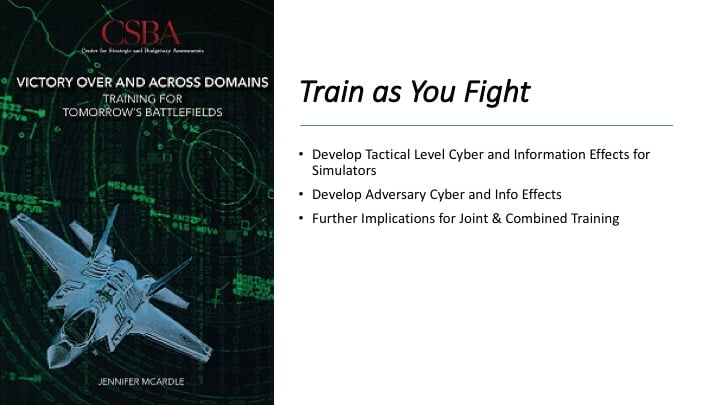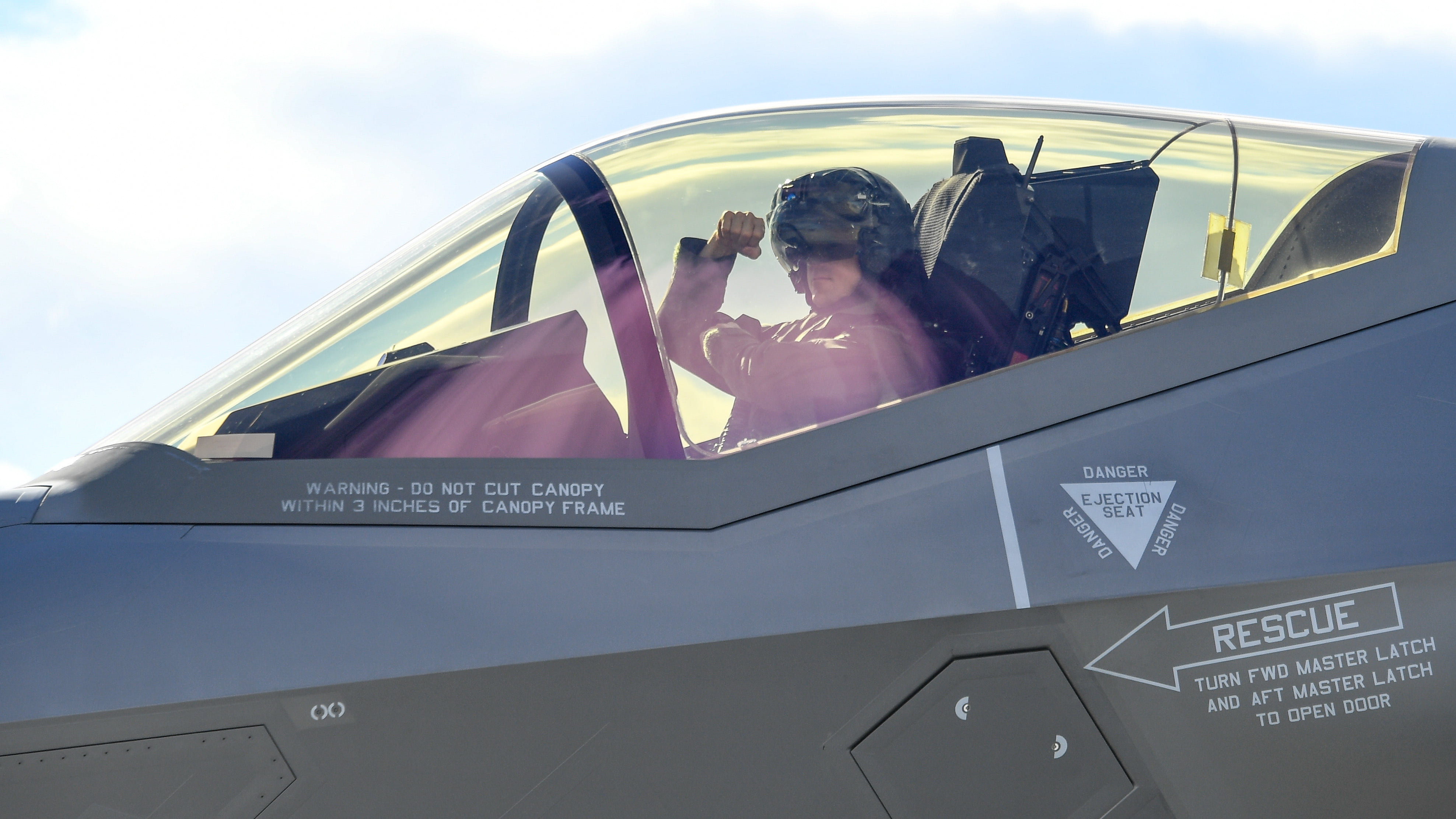By Robbin Laird
An ability to actually have a kill web force requires the training to actually do it.
Training will need to occur on two levels.
First, in the live environment, working the physical pieces of operating ADA with Naval Systems with Air Systems and working the C2 architecture to put the pieces In place to cross-leverage and to worked distributed C2, on the one hand, and strategic level command of a distributed force on the other.
And such training will require significant ops space, of the sort the US, Canada and Australia have available.
Second, the virtual environment is crucial in order to use a number of the fifth gen capabilities, associated with tron warfare and other cross leveraging means which one would not like the adversary to be able to see in the operational space.
This means then that the preparation for kill web ops requires combining live and virtual training either at the same tie or separately.
What a kill web allows you to do is to operate a force appropriate to the full spectrum crisis management environment which the liberal democracies face.
I had a chance to talk with Air Marshal (Retired) Geoff Brown during my current visit to Canberra. Geoff had just returned from the UK where he participated in training conference.
We discussed the challenge of overcoming the challenge of legacy approaches to training and ways to move forward towards a more integrated fifth gen or kill web approach.
Air Marshal Brown underscored that the challenge of transition was indeed a difficult one, but a central one for the air forces of the liberal democracies to work together in crises against peer competitors and to prevail.
He argued that even flying modern equipment like the RAAF is currently doing does not guarantee that one is operating with cutting concepts of operations.
Brown noted: “Today’s Western military is an information-dependent force, one that is wholly reliant on information communication technology (ICT) for current and future military operations.
“The adaptation and integration of ICTs into weapons platforms, military systems, and in concepts of operation has put the battle for information control at the heart of what we do!
“Now while the use of ICT exponentially increases the Western military’s lethality,
“The dependence on these technologies, in many ways, is also a vulnerability. Competitors and adversaries— most notably Russia, China, Iran, and North Korea—recognize this reality.
“Each state plans to employ a range of cyber capabilities to undermine the confidentiality, integrity, and availability of Western allied information in competition and combat.”
Because of this situation several key training questions need to addressed and answered.
The three key questions for Brown are as follows:
- How to train in Battlespace saturated by adversary cyber and Information attacks?
- How to exploit the advantages of cyber in multi-domain operations
- Do we have the tools and key infrastructure to train in an appropriate manner?
“I believe it’s safe to say it is impossible to deny an adversary entirely of the ability to shape aspects of the information environment, whether it’s through spoofing or sabotaging ICT-based warfighting systems. As a result, our goal should be to sustain military operations in spite of a denied, disrupted, or subverted information environment.”

He underscored the challenge this way:
“The requirement is that warfighters need to be able to fight as an integrated whole in and through an increasingly contested and complex battlespace saturated by adversary cyber and information operations. But how to do this so that we are shaping our con-ops but not sharing them with adversary in advance of operations?”
“The battle for information control needs to drive our training needs much more than it does at the moment. We need to provide warfighters with the right kind of combat learning.”
We then discussed current approaches such as at Red Flag and how we might change the approach to get closer to the kill web capability.
“During large-scale exercises like Red Flag, cyber training is often employed in parallel with traditional kinetic training programs and is not fully integrated. Non-cyber war fighters do not necessarily experience the effects of “cyber play” while it is ongoing.
“When cyber effects are integrated into live training events, my experience is that they are often “white carded,” Although this does provide war fighters some insight into how their systems or platforms may be affected in the event of a cyberattack, the lack of realism precludes them from experiencing and subsequently troubleshooting that attack.”
He cautioned that there are good reasons why this is not done.
“The integration of these effects into a live training environment could sabotage the other goals of the exercise, present safety risks to war fighters, and reveal platform vulnerabilities to inquisitive adversaries.”
In spite of the limitation, “these live training challenges can’t preclude us from training for a future contested and complex battlespace.”

He argued that “We definitely need to train as we fight – so we need to develop Tactical Level cyber and Information effects for simulators and to develop adversary cyber and Info effects into our evolving concepts of operations.”
In other words, he argued that live training remains very significant for organizing a strike and defense force and working the physical pieces of the task force or air group.
But that the virtual world is now a key area in which you will shape, work on and exercise your information force concepts of operations.
“One of the foundational assumptions I’ve always had is that high quality live training is an essential to producing high quality war fighters but I believe that’s changed
“Even if you don’t take cyber into account, and look at an aircraft like an F-35 with an the AESA radar and fusion capabilities, the reality of how we will fight has changed dramatically.
“In the world of mechanically scanned array radars. a 2v 4 was a challenging exercise — now as we have moved more towards AESA’s where it is not Track while you Scan but its search while track , it’s very hard to challenge these aircraft in the live environment.
“And to be blunt about it, the F-35 and, certainly the F-35 as an integrated force, will only be fully unleashed within classified simulations.
“This means that we will achieve the best training outcomes for aircraft like the F-35 only if we have a more comprehensive virtual environment.”
If we do not do this we will fly fifth generation aircraft shackled by legacy air combat approaches; and we will not unleash the kill web in terms of its complexity and lethality unless we shape a training approach which allows the F-35 working with other key force elements to deliver a kill web outcome.
The featured photo shows an F-35A Lightning II pilot from the 388th Fighter Wing’s 4th Fighter Squadron prepares to launch during Red Flag 19-1, Nelllis Air Force Base, Nev., Feb. 6, 2019.


